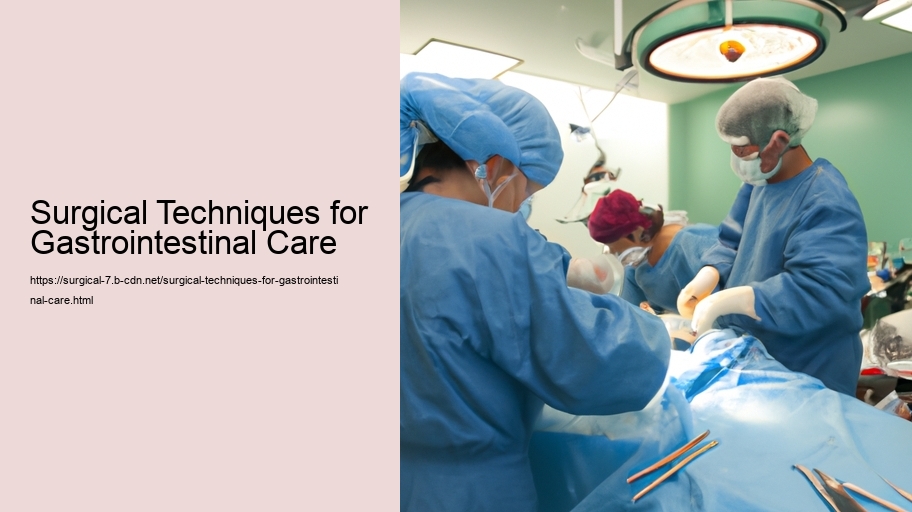Surgical Techniques for Gastrointestinal Care
The realm of gastrointestinal care has been transformed by the advent of advanced surgical techniques that cater to the intricate anatomy and complex diseases of the digestive system. These procedures are at the heart of managing conditions that range from benign to life-threatening, encompassing a broad spectrum of diseases affecting the esophagus, stomach, intestines, liver, gallbladder, pancreas, and rectum. This essay explores the various surgical techniques employed in gastrointestinal care, their applications, and the impact they have on patient outcomes.
Traditional Open Surgery has been the cornerstone of gastrointestinal procedures for decades. Open surgery involves making a large incision in the abdomen to access the digestive organs. This approach provides surgeons with a clear view and ample room to operate. It is often reserved for complex or extensive surgeries, such as esophagectomy for esophageal cancer or colectomy for colon cancer. Despite its effectiveness, open surgery comes with a significant recovery period and a higher risk of complications, such as infection and hernias.
Laparoscopic Surgery, also known as minimally invasive surgery, represents a major leap forward in gastrointestinal care. This technique uses several small incisions through which a camera and specialized instruments are inserted, allowing the surgeon to perform the procedure with enhanced precision and visualization. The benefits of laparoscopic surgery are manifold: reduced pain, shorter hospital stays, quicker return to normal activities, and smaller scars. Common laparoscopic procedures include cholecystectomy for gallbladder removal and appendectomy for appendicitis.
Endoscopic Surgery is another minimally invasive method that utilizes natural body openings to access the gastrointestinal tract. Endoscopes are flexible tubes with cameras and tools attached, which are guided through the mouth or anus to diagnose and treat various conditions. Techniques like Endoscopic Retrograde Cholangiopancreatography (ERCP) are used to address issues in the bile ducts and pancreas, and Endoscopic Mucosal Resection (EMR) can remove early-stage cancerous or precancerous tissue without the need for external incisions.
Robotic Surgery has emerged as a cutting-edge extension of laparoscopic techniques, where the surgeon controls robotic arms to perform the surgery with high precision. The robotic system provides a three-dimensional view and articulating instruments that mimic the movements of the human hand, but with a greater range of motion. This approach is particularly useful for intricate procedures like rectal surgery, where maneuvering in a confined space is required. Robotic surgery offers the benefits of minimally invasive surgery while potentially increasing the precision and decreasing the difficulty of complex procedures.
Bariatric Surgery, including gastric bypass and sleeve gastrectomy, is performed on the gastrointestinal tract to induce weight loss. These procedures either restrict the stomach size or bypass portions of the digestive system, leading to reduced calorie intake and nutrient absorption. While primarily aimed at treating obesity, bariatric surgery also has significant positive effects on obesity-related conditions such as type 2 diabetes, hypertension, and sleep apnea.
Colorectal Surgery encompasses a variety of procedures to treat diseases of the colon, rectum, and anus. Techniques such as polypectomy for polyp removal, colectomy for colon cancer, and hemorrhoidectomy for hemorrhoids are performed using both open and minimally invasive methods. Enhanced recovery protocols and the advent of transanal minimally invasive surgery (TAMIS) have further improved outcomes for patients undergoing colorectal surgery.
In conclusion, surgical techniques for gastrointestinal care have evolved dramatically, offering a range of options from traditional open surgery to state-of-the-art robotic procedures. Each technique carries its own set of indications, advantages, and considerations, but the overarching goal remains constant: to provide safe, effective, and patient-centered care. As surgical technology and techniques continue to advance, the potential for improved patient outcomes and quality of life grows, making the field of gastrointestinal surgery an exciting and continually evolving domain of medicine.
